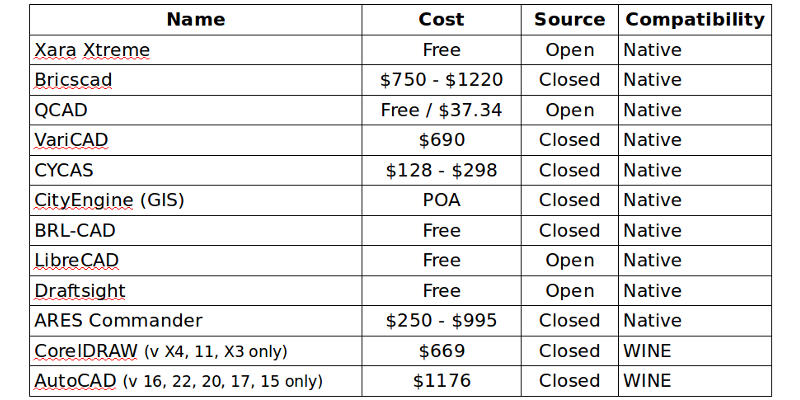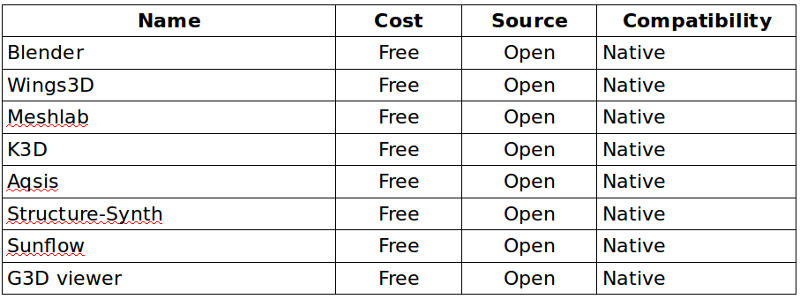Even after all these years, when the differences between operating systems has become increasingly blurred, the majority of designers are heavily entrenched in the Mac camp. Many of them will never leave it because they've fallen head over heels in love with the brand.
Other designers use Windows because it's what they started out with, is supported by most of the major hardware manufacturers, and has plenty of software available. For them, it's less about love, and more about practical considerations.
Both groups are missing out on the advantages Linux can provide. The interesting thing is that Linux not only can do just about everything the other operating systems can do, it can do these things better and with greater simplicity, except when it comes to “low level” tasks that a typical user rarely has any need to perform.
What you'll discover in this article is some of the features that make Linux a perfect operating system for any designer.
1. It's free
This is the biggest advantage Linux offers over Windows, and to a certain extent over OS X as well. The worst thing about Windows is the upgrade cycle you get locked into with it. Over time, Windows keeps releasing new versions, which are never cheap if you want any real control over your system.
It's no fun paying for this stuff, when it doesn't actually do anything special. Plus quite a lot of the software you'll be running on it may require paying for. The same goes for OS X. And don't even get me started on the hardware costs of a Mac.
Linux doesn't cost you a dime unless you decide to make a donation to help support its development. And once you have it, it's yours for life. There's no costly upgrade cycle to get locked into, and you also don't need to constantly upgrade your hardware to keep pace with the operating system upgrades.
Even better, nearly all the native software for Linux is free, and you can also run almost every Windows and some Mac applications on a Linux box as easily as you could on the native operating system.
Armed with GIMP, mtPaint, ImageMagick, Inkscape, myPaint, Xara Xtreme, Blender, and Agave, you can have a powerful design platform without spending a cent on anything other than your hardware.
2. There are no residual trust issues
Windows and OS X both contain huge amounts of code that nobody outside of Microsoft or Apple is supposed to examine.
What that means for you as a user is you have to put your trust in these corporations that they haven't hidden anything nasty in the source code that might invade your privacy. Did somebody say PRISM?
Linux is fully open source. There are no surprises this way. If there was any malicious code hidden inside Linux, it would be discovered almost instantly and removed by any of the thousands of volunteers who work to keep Linux as the most secure operating system no money can buy.
3. It's way more secure
Linux was built from the start to be a secure operating system, and it is. That doesn't mean you never have to worry about security, but it does mean you don't waste time downloading anti-virus database files every day.
4. It's also more efficient (than Windows)
Windows has a funny method of storing files, and this method wastes a lot of space and causes fragmentation. It's why you need to occasionally defrag NTFS or FAT32 disks. Linux stores files very differently, so you don't get wasted space. That's just one way it's more efficient.
Another way it's efficient is that it doesn't require anywhere near the computing resources demanded by Windows 10 or OS X. Windows 10 needs 20GB of space just for the operating system, which is not going to be a problem with Linux, which can fit on a 256MB flash drive with room to spare.
Now let's take a look at the software Linux offers to designers (and remember, you can also use Windows and Mac applications in those situations where a native Linux program isn't up to the job.
Heavy duty bitmap image editing

Lightweight bitmap image editing

Batch image editing

Vector graphics

Painting & Drawing

CAD

Because the most recent versions of CorelDRAW and AutoCAD don't install properly in the current version of WINE, you'll need to either already have a copy of one of the listed versions, or purchase a second hand copy, and in any case they're not guaranteed to work. The native Linux applications, whether free or paid, are a better choice.
Animation
Synfig Studio is the replacement for Flash and it does quite a good job of 2D vector drawing and animation. Its main purpose is to create broadcast quality animated cartoons, so it doesn't duplicate everything Flash could do, but in some ways the animation quality is superior. Check out this great demo video, for example. It's a short film created using Synfig Studio, Blender, Pencil, MyPaint, Remake, and GIMP.
Flash, of course, should no longer be used for creating online content. It's blocked by default in many major browsers and operating systems, has known security vulnerabilities, and is generally hated by web users due to its abuse by the marketing industry, and the privacy-stealing persistent Flash cookies.
Another alternative in this category is Tupi, which is less well known and more simplistic, but nonetheless a decent tool for drawing and animation. The resultant files are not the same broadcast quality you'll get from Synfig, but it can export output direct to video in multiple formats.
One thing that is especially impressive about Synfig Studio is that there's a very comprehensive online video training program, complete with proper closed captions, which is something you won't often find with commercial software, and here it is for freeware.
3D

Other
Scribus is a free, open source application for desktop publishing based on SVG and capable of producing PDF, Postscript, and XML output.
Agave is a brilliant piece of software for selecting color schemes. It's a little difficult to describe, but once you've seen it in action, it will become an indispensable addition to your design tool kit.
Posterazor splits large images into multiple printed pages for assembly into a large poster (suitable for billboard creation).
Aeskulap is a DICOM compatible medical image viewer.
Povray, as the name implies, is a raytracer.
Closing remarks
The above list of software may seem exhaustive, but in reality it barely touches the surface of what's out there. If you haven't tried Linux in a while, you'll probably be surprised by how far along all these projects have come in just a short time.
Previously, Linux had a reputation for being difficult to use and unsuitable for the desktop, but that has changed. Many things are actually easier to accomplish in Linux than they would be on OS X or Windows, because there's less hidden from you.
The best thing though is that even if not every piece of hardware is supported, at least you'll know instantly in Linux. Those massive delays every time you plug something new into Windows are infuriating. In Linux everything either works or it doesn't, and there's either a way to get it working or there's not.
Finally, it's possible to run both Windows and OS X inside Linux, and it's possible to run Linux inside either of the other two, and there are Linux distros made especially for running on Mac hardware. So it's possible to enjoy the better features of all these operating systems if you wish.
header image courtesy of




Comments 0 Responses